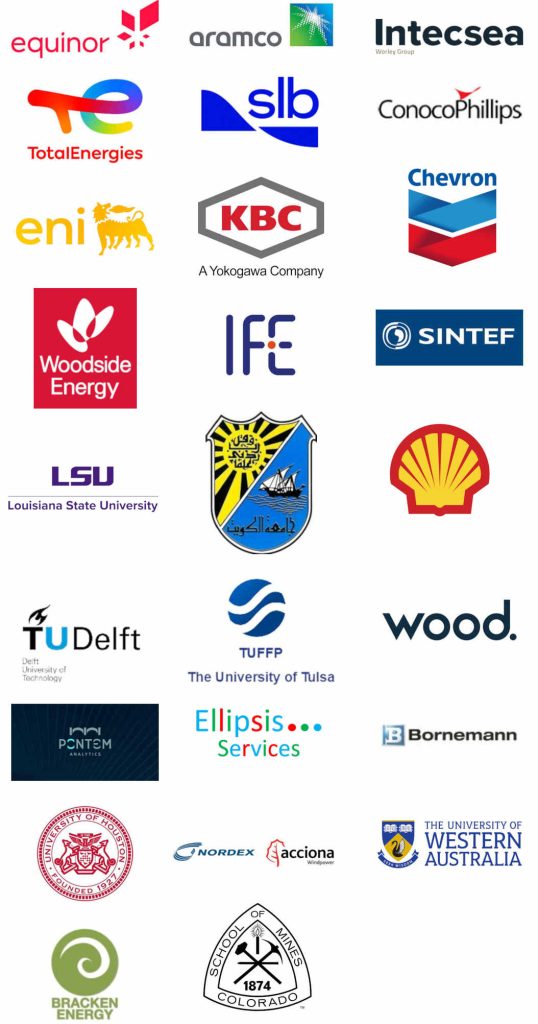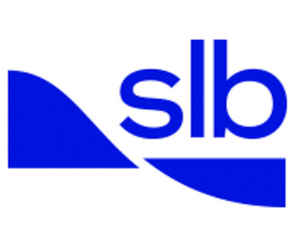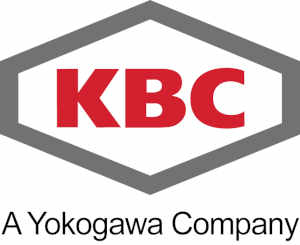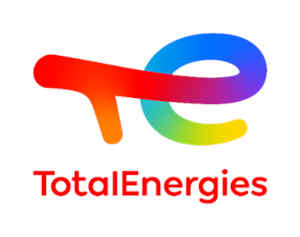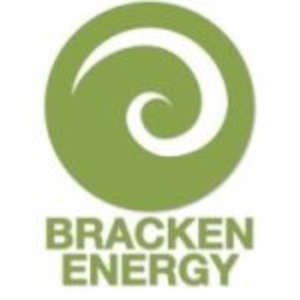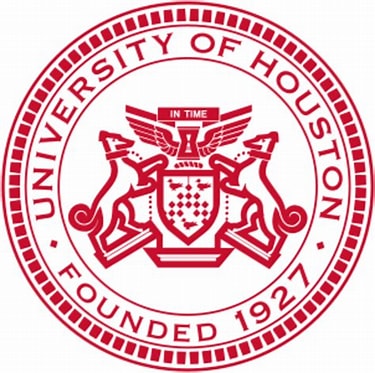
Subject to TAC approval and double peer review. Please expand to view the abstract
Asphaltene deposition in oil production systems is a poorly understood and predicted flow assurance phenomenon that impacts project economics and safety. The Asphaltene Integrated Model (AIM) simulator predicts asphaltene deposition behavior along the production system to enable the development of asphaltene deposition prevention, mitigation, and management techniques and strategies. The AIM simulator integrates a reservoir sector model and the well flow model and incorporates asphaltene deposition and precipitation models in the reservoir, asphaltene deposition and precipitation models in the well, thermal-hydrodynamic multiphase well flow model, asphaltene transport model, and fluid compositional model using Equation-of-State (EOS). These models are integrated using a PythonTM platform, which numerically links all the models in time and space throughout the production system. Furthermore, a field PVT database and SARA analysis are used to tune the EoS model and the asphaltene precipitation model to ensure accurate phase behavior, volumetric calculations, and asphaltene and resin precipitations. A field validation of the AIM simulator against a caliper log deposition data revealed a very good match.
Various simulation case studies investigating the effect of well and reservoir parameters revealed valuable insights into the asphaltene deposition behavior. For example, although asphaltene precipitation increases with water cut, asphaltene deposition decreases due to high shear stresses, which reduces the sticking tendency of asphaltene on the pipe wall. Furthermore, it has been found that large asphaltene aggregates tend to be transported in the flow stream, reducing the asphaltene deposition rate. In addition, AIM simulator predictions revealed a low asphaltene deposition rate at a high production flow rate due to low asphaltene sticking probability (the ratio of particle wall adhesion to flow drags force), which re-entrain deposited asphaltene aggregates into the flow stream. In the reservoir, simulation cases revealed that reservoir pressure depletion results in a moderate asphaltene deposition in the near-wellbore region. Moreover, the reservoir rock wettability effect is investigated, which revealed that an oil-wet system results in early asphaltene deposition in the near-wellbore region, making it essential to address these conditions to optimize reservoir performance under asphaltene deposition. Overall, AIM simulation case studies shed light on asphaltene deposition behavior, enabling field production strategies to prevent, mitigate, and manage asphaltene deposition risk to maximize economics and field personnel safety.
In this study, we developed a flow model to represent the circulation of diesel oil, seawater and nitrogen in oil production pipes. Simulations of this type are important for quantifying the volume of the original fluid that will remain in the pipeline at the end of the operation (residual volume), as well as predicting pressure trends at the pump discharge or at key points of the system (for instance, pipelines with compromised integrity might have a narrower pressure range limit). To calculate the residual volume, a one-dimensional mechanistic steady-state approach was adopted based on a force equilibrium on the stagnant bubble. To estimate pressure trends at the pump discharge and at other key points along the system, a pseudo-transient approach was chosen, consisting of several screenshots of steady-state flows placed sequentially.
Although we propose a very simplified view of the phenomena involved, the results obtained in the representation of cleaning operations conducted in four real Offshore Production Facilities (OPFs), all of them located in the Campos Basin, are promising. The residual volume predictions showed deviations of less than 10% in relation to the values indicated by the OLGA simulator, while the pressure trends preserved the minimums and maximums observed in the operational readings of the sensors installed along the flow loop.
It is believed that the models presented here will be useful not only in typical flow assurance simulations, such as hydrate prevention, but also in the development of procedures for abandoning and reusing pipelines that will precede the revitalization projects conducted by Petrobras in the Campos Basin (e.g., Marlim and Voador fields).
Hydrodynamic slug flow tends to evolve over long distance, rendering the fully developed unit cell model (UCM) inadequate for predicting parameters such as slug length and frequency. These parameters are important for various purposes, such as pipeline integrity management and separator design. Currently, slug tracking is the most commonly used technique to perform such simulations in coarse grid (100D+) systems. However, it involves extra subgrid computations that reduce the simulation speed by about 5 to 20 times compared to the UCM. Furthermore, as it tracks the movement of each individual slug, slug tracking requires a sufficiently long time to enable a statistically representative number of slugs to be generated and transported throughout the system in the simulation.
With the primary aim to increase computational speed, we have developed a novel 1D model to dynamically simulate developing hydrodynamic slug flow. We coupled a transport equation for slug density (number of slugs per unit length), including terms to quantify slug initiation, breakup, coalescence, and decay rates, with the mass balance equations for the two zones of a slug unit (slug body and Taylor bubble). The slug transport equation tracks the population density of interfaces, i.e., slug fronts and tails, through which mass transfer between the two zones occur. Unlike the UCM, the zonal mass balance equations do not impose zero-net-mass fluxes between the two zones, so we can simulate the evolution of the statistical ensemble average slug properties over space and time .
We implemented the new model in a commercial transient multiphase simulator (CS) code and validated it against more than 300 developing slug flow data sets, combining laboratory and field cases. The model produces similar prediction accuracy to the slug tracking model in the CS for most cases, while achieving a median speed-up factor of four for the same discretization and simulated time. The new model is only 33% slower (by median value) than the UCM in the CS, although it is 15% faster on a per timestep basis. Moreover, the new model does not require extended simulation time because it computes the average properties of a statistical ensemble, not in the physical time/space domains. In conclusion, this model represents a step-change in the slug flow modelling technology, enabling engineers to perform challenging and traditionally time-consuming simulations of developing hydrodynamic slug flow with a speed that is comparable to the fully developed UCM.
Slug flow is one of the most common two-phase flow patterns encountered in pipelines and surface facilities, especially in upward and horizontal systems. Its dynamic structure, including slug body and gas pocket, brings out a risk of integrity failure by fatigue in pipelines, elbow structures, or separators if the system is poorly designed. Therefore, accurate slug characterization is essential for reliable pressure loss calculations, and appropriate sizing of pipeline and separator, including integrity and safety aspects. This paper presents a detailed computer vision approach for characterizing slug and near-slug conditions, such as transitions to stratified and pseudo-slug. The approach is assessed using experimental recordings of different flow conditions acquired from a three (3) in. acrylic pipeline at the University of Tulsa. The computer vision algorithm extracts liquid height from video recordings to derive critical flow parameters, including translational velocity, liquid holdup, frequency, and slug length. The transition regions between flow patterns are also investigated regarding flow parameters to demarcate flow pattern boundaries. The proposed methodology is evaluated by comparing the obtained results from experiments and TUFFP Unified model predictions, which showed good agreement. The result validates the feasibility of computer vision as a non-intrusive tool for predicting flow parameters and optimizing pressure loss calculations. Besides that, this work presents substantial information on flow conditions associated with slug formation and flow pattern transitions to improve flow assurance practices and minimize system risks.
Keywords: Two-phase flow, Computer vision, Edge Detection, Near-slug conditions, Slug characteristics
Investigation of downward flow is relevant due to the downward inclination of transport lines, injection of chemicals and CO2 as part of Enhanced Oil Recovery (EOR) operations, and possible operation in a two-phase flow region while transporting and injecting a mixture of CO2 and contaminants during CO2 capture and underground storage. However, downward two-phase flow is one of the least studied areas of multiphase flow with limited experimental data and modeling studies. Moreover, previously acquired experimental data shows that existing models fail to predict flow parameters for downward flow accurately.
This paper presents an experimental study of low-viscosity oil and air flow in a 2-in downward inclined pipe (45°, 60°, and 70°). Experimental data includes flow patterns from video observations, average liquid holdup from quick closing valves (QCV), pressure gradient from differential pressure transducers, and wall-liquid shear stress from constant temperature anemometer (CTA). Liquid and gas superficial velocities vary from 0.1 to 1.6 m/s and 1 to 7 m/s, respectively. Stratified Wavy (SW), Stratified Wavy with Thin Film (SW-TF), Slug (SL), and Pseudo-Slug (PS) flows are observed for given experimental conditions. Experimental results are compared with the most commonly used software, based on mechanistic models for predicting flow patterns, liquid holdup, pressure gradient, and wall-liquid shear stress. A parametric study of Taitel and Dukler’s (1976) model is done for stratified flow conditions to evaluate the contribution of each variable in the model. Results show that the experimental wetted perimeter is higher than the calculated one due to the aeration of the bottom film, resulting in lower wall-liquid shear stress.
WAG (Water Alternating Gas) injection wells are used as a secondary recovery method in Brazilian pre-salt fields. The advantage of alternating gas and water injection is the change in the relative permeability of the fluids by including a third phase in the reservoir, increased stability of the advancing front and attenuation of fingers. WAG combines the best gas displacement efficiency and the best water sweep. Despite the positive points, there is also a risk of hydrate blockage due to gas migration during well closure in the water injection phase, especially in the first days after the WAG exchange is performed. Traditionally, WAG injection wells use diesel bullhead or continuous MEG injection as hydrate prevention methods in the event of gas return. An alternative hydrate prevention method is the ethanol injection in the column with the aim of creating an ethanol interface avoiding water/gas contact. Hydrate prevention using an ethanol was successfully used for the first time at Santos basin in a confirmed gas return in April 2024, after modifications to allow subsea ethanol injection. The main advantage of using an ethanol is to achieve efficient hydrate prevention at a lower cost. However, points of attention were identified during the execution of the procedure to avoid the risk of subsea valve passages hydrating the injection line
Fully understanding the multiphase flow regime in a pipeline network is often very challenging, especially when the flow behaviour transitions from one regime to another due to flow splitting. This challenge is exacerbated when the multiphase flow split is not fully understood, leading to scenarios where one part of the network receives more gas while another is filled with liquid. Although pipeline engineers strive to design the branches downstream of the split as symmetric as possible, space constraints or a lack of understanding of the complexity of multiphase flow dynamics can result in significant unbalanced flow between the branches.
Numerical tools used to simulate multiphase flow behaviour can be divided into two categories: 1D software, which relies on the fully developed flow assumption, and 3D tools, which explicitly solve the Navier-Stokes equations. In the context of a multiphase flow split within a network, the 1D solver will only consider the pressure balance within the different branches but ignore the flow dynamics that cause the maldistribution of phases at the split. In contrast, the 3D model takes into account the local details of the pipeline around the split area and the flow dynamics to determine a more accurate flow split of each phase, but is limited in terms of the length of the pipeline included in the model.
Using ideal cases and real-life examples, the authors will investigate a range of applications of 1D vs. 3D tools to determine the level of accuracy of each method and give practical advice to engineers tasked with designing multiphase splits.
The unsteady character of multiphase flow in piping systems may result in unacceptable motions when the piping is insufficiently supported. To investigate the risk of fatigue failure of the system, finite-element models are used to predict the dynamic stresses required to estimate the fatigue life of the system. The multiphase flow excitation force on a pipe bend is the essential input required for accurate fatigue damage predictions.
In recent years, experimental campaigns and theoretical evaluations have increased the understanding of the excitation force. Next to the Computational Fluid Dynamics methods developed and validated, simple analytical correlations are found which are successfully predicting the RMS force of the fluctuations. Most published measurements were done with air and water under atmospheric conditions. Computational Fluid Dynamics indicates that the RMS force reduces for higher pressure. An experimental campaign at Equinor’s flow facility in Porsgrunn confirms the trend. The force on all the bends was obtained from acceleration measurements combined with a mechanical response model of the experimental piping using water, oil, and gas.
This paper uses force data collected at 20, 40, 60, and 80 bar to adapt an existing two-phase and low-pressure RMS force correlation for elevated pressures up to 80 bar. A high-pressure correction coefficient is introduced into the old RMS force relation, tuned and able to predict the highest force measured on all the bends. Other experimental data (not used for tuning) can now accurately be predicted
Furthermore, the results of a stochastic mechanistic model of the slug force acting on a pipe bend are compared with the measurements. The one-dimensional model for hydrodynamic two-phase slug flow is based on the mass and momentum balances to predict slug quantities such as liquid holdup and phase velocity. Each slug unit is divided into a film zone with a constant liquid height and a slug zone with aerated liquid. The two-phase flow is described by a train of slug units with stochastically varying length. The model over-predicts the RMS forces obtained from acceleration measurements and a mechanical response model. To ensure that the forces are not under predicted, the tuning is adapted to ensure usability in fatigue design.
Oil and gas production operations in deepwater offshore fields pose many flow assurance-related challenges, one of them being the initial field start-up that includes a large number of production and injection wells. The well sequencing order is vital to secure a successful ramp-up of the field with varying reservoir pressures and productivities. The typical flow assurance challenges associated with field start-up operations may include and are not restricted to the initial displacement of the completion fluid from the well tubing, displacement of startup fluid (dead oil) from the flowline/riser, the possibility of hydrate formation, sand production, and flow instabilities that may result in slugging. Therefore, flow assurance and production engineers must have a holistic approach when planning the field start-up operations, with emphasis on both the reservoir/subsea considerations and the topside facility limits.
This paper presents the efforts to investigate feasible field start-up strategies for a major offshore deepwater production system with planned reservoir pressure maintenance through water and gas injection wells. The goal was to achieve a successful field startup while overcoming challenges due to completion drawdown limits, well deliverability, production chemistry, flowline/riser geometry, and the actual topside operational requirements. The analysis included a review of the reservoir production forecast, wells allocation, flow distribution among different flowlines, and the topside operational pressure requirements which in turn was dictated by field injection needs. Multiple start-up sequencing options were analyzed with variations in well clusters (drill centers) start-ups, alternating characteristics of the first wells being brought online in each loop, usage of test separator versus the main topside’s separators per operational needs, and adjusting the chemical inhibition demands accordingly. Finally, the most optimal start-up sequence was recommended that establishes stable flow while minimizing the above-described challenges and operating within the system limitations. The entire analysis was conducted using an advanced multiphase flow simulator capable of performing transient flow modeling, essential for capturing the dynamic nature of the physical phenomenon.
Gas-liquid two-phase flow in vertical pipe is notably found in carbon capture and storage (CCS) systems. This flow configuration remains less investigated and understood comparatively to vertical upward and horizontal flow. In this flow configuration, the main flow regimes present are dispersed bubbles, segregated and intermittent flows. On the other hand, there are three kinds of intermittent flow which are cap bubble, slug and churn flows. For design engineering, it is crucial to correctly predict the presence of each flow regime for a given set of operating parameters. This aim can be achieved through mechanistic models where the conditions of flow transitions are expressed as algebraic equations.
This paper aims to progress our understanding of the three flow regimes of the intermittent flow in vertical downward flow. A series of visualizations were done using a high-speed camera. The experiments were done using an air-water mixture flowing in a 30 mm ID pipe. The study notably explores the range of high superficial velocities (0.86 m/s ≤ VSL ≤ 2.63 m/s). The visual observations allowed to report the complex nature of the slug-to-churn flows transition with the simultaneous presence of droplets and disturbance waves within Taylor bubble region.
From the analysis of the images of the flow for the different sets of operating conditions, two new models for predicting cap bubble-to-slug and slug-to-churn flow transition were developed. The first one is developed from the difference between the average liquid and gas velocities and by associating this transition to the critical value of liquid holdup of 0.825. On the other hand, the slug-to-churn flows transition is associated to a critical value of slug liquid holdup. This transition model is based on the recent correlation for predicting slug liquid holdup developed by Saidj et al. (2025) (Physics of Fluids, 37(1), 2015). The developed models were assessed with the reported flow observations as well as the collected database from the literature. Good prediction level was obtained, which demonstrates the reliability of the proposed approaches for modeling the two flow transitions.
CO2 Geological Carbon Storage (GCS) projects, which considers the transportation of a rich-CO2 stream from a captured source to the final reservoir destination, is confirmed as a required technology to reduce greenhouse gases at the atmosphere and achieve Net Zero emission targets. A critical aspect to be accounted for at GCS project estimations from initial phases, is the precise evaluation of the thermodynamic properties to be accounted for by all the technical disciplines participating at the project (facilities, operations, reservoir, drilling and completions, material integrity…), as the proper fluid characterization will be common for all of them. In addition, the early vapor-liquid, water drop out and hydrate formation envelopes estimation by a team may unveil potential risks to other teams which will clearly beneficiate their subsequent work.
Although numerous studies discuss the accuracy and the best Equation of State (EoS) alternative for these estimations, the availability of suitable EoS within simulation tools for the different areas of expertise such as flow assurance, reservoir engineering, and material integrity remains limited. In addition, different EoS produce varying predictions of critical properties like density, viscosity, and the Joule-Thomson coefficient, directly influencing pressure drop, heat transfer, flow behavior, CO2 storage capacity, and CO2 flow in porous media. Such variations can lead to error propagation, which still needs in depth investigation and understanding.
This work begins with a detailed analysis of the differences in properties predictions using several EoS for typical injection conditions of GCS projects, followed by rigorous simulation work for transport, injection, and reservoir modeling estimations. The methodology employs an integrated simulation workflow to determine the specific impact of thermodynamics in fluid flow behavior at each of the simulation stages. The evaluation considers a CO2 system with over 90% purity being transported from the capture location to the final reservoir storage location.
Given the known discrepancies among EoS property estimations and their availability across different simulation tools, it is crucial to evaluate these deviations and develop adaptations to ensure consistency among the whole GCS chain.
Finally, the study discusses the impact of different EoS on fluid-dynamic results, the total CO2 storage volume as well as the CO2 flow distribution within the reservoir over time. The presented evaluation results clearly illustrate the value of standardized approaches to EoS selection and its integration across the different simulation platforms, demonstrating the impact of thermodynamic properties in fluid flow behaviour to ensure accurate and reliable CCS operations throughout the entire field life.
The development of offshore projects at Floating Production Storage and Offloading (FPSO) for heavy crude oil production usually presents significant challenges related to flow assurance, under both steady-state and transient operating conditions. The latter becomes of outmost importance for deepwater project development as future interventions will present higher costs and limitations than for conventional fields.
During steady-state operations, gas lift injection optimization is crucial to achieve target production rates and maintain arrival temperatures above the wax appearance temperature at facitilies, avoiding the need for continuous paraffin inhibitor injection. When water starts being produced from the reservoir, the increase in viscosity due to emulsion generation further complicates crude transportation, creating additional challenges in flow management. An accurate emulsion modelling is key to properly estimate the pressure drop along the production system during the design phase of this type of projects. However, some limitations are faced in this regard; from the fact that an accurate emulsion modelling requires detailed experimental data (inversion point, emulsion viscosity, emulsion stability, etc.) to reproduce emulsion behavior, being most of the cases the sample volume available limited; to the point that even with the most accurate experimental data available, multiphase fluid dynamic simulators such as OLGA® present some limitations that needs to be considered and properly addressed. In addition, when emulsion viscosities are high enough to cause deliverability issues (forecasted production rates not met), demulsifier injection and its impact on viscosity requires to be evaluated, although this may be additionally hindered by the uncertainty on demulsifier effectiveness when no or limited experimental data is available.
In transient operations analysis, the need for adequate thermal design to prevent hydrate formation during cooldown and production restart periods is critical. However, for heavy crude oil fluids, simulations of hot and cold restart scenarios demonstrate that managing fluid viscosity is essential as it significantly impacts obtained model results. Due to the associated challenge in these operations, fluid displacement evaluations may be also required to validate pumping requirements and assure future installed capacity.
An integrated evaluation workflow was developed at this work to reduce the existing uncertainty on emulsion viscosity to overcome the limitations derived from experimental data and software modelling functionalities.
This study underscores the complexity and the necessity of an integrated approach to Flow Assurance evaluations for the successful development of offshore heavy crude oil projects. Besides, it highlights the need for innovative and adaptive solutions to ensure continuity and efficiency of operations under challenging operating conditions.
Within the operation of Ormen Lange gas field in 2022, multiple infield pipeline blockages were observed. An investigation was carried out to identify the cause of these blockages, focusing on identifying their location and cause. After thorough work and modelling, it was concluded that the most likely cause was hydrate formation during the previous deadleg periods.
During operation, gas is continuously dosed with MonoEthylene Glycol (MEG) to prevent hydrate formation. However, if a section of the pipeline is a deadleg (no effective flow in the line), a subsequent risk is hydrate formation. When exposed to the natural pressure oscillations of the field, hot water-saturated gas can back-flow into the cold deadleg. The water that condenses due to cooling of the gas can stay in this section and dilute the present hydrate inhibitor, making any deadleg section (pipeline, spools, …) potential place for hydrate formation.
Deadleg blockages can form without being detected as long as there is no flow in the line. It is only when restarting the flow that the blockage can be observed by an increase of the pressure. From there, a pressure-volume assessment can be done to identify with more precision the first blockage’s location.
With field experience from these blockages and following dynamic simulations and assessments, recommendations were defined on how to prevent hydrate blockage formation by flushing with production fluid or restarting flow in the deadleg after a certain period.
In the largest Petrobras post-salt non-associated gas field, a jacket platform is installed to operate 7 wells with 5 ½’’ production tubing and 6’’ flowlines, a manifolded 12’’ subsea system, and a processing plant adapted to be a hub for gas import and export. Among the main challenges faced in the operation of this production unit are: high operating pressure of the processing plant (65 to 70 bar); high integrity pressure protection system (HIPPS) that protects the two rigid pipelines of the gathering system; 22 kilometers in length for each gathering pipeline, which accumulate produced liquids and result in slugs on every increase of flowrate; MEG regeneration system, which is continuously injected into the wells for hydrate prevention/remediation.
Due to the current depletion of the undersaturated reservoir, the characteristics of the subsea system and wells, and the high operating pressure of the processing plant, the gas flowrate from 3 out of the 7 wells are around 300 M sm³/d each. This situation poses the risk of liquid loading in their tubing. On February 25th of 2024, during a well testing campaign in which they experience high back pressure, and two weeks before a scheduled shutdown of the platform, one well with a gas potential of 293 M sm³/d suffered liquid loading. The aggravating factors of this occurrence were: miscommunication about availability and capacity of the rich MEG tanking system, insufficient for the liquid surges at the topside, which resulted in increased pressure in the plant due to vessel clogging; coincident pressure increase in the gas flow export route due to restrictions occurring in the onshore gas treatment unit, resulting in another pressure increase in the plant; lack of downhole pressure sensor in the well; and lack of monitoring alarms indicating wells loss of natural flow, both in supervisory and in specialized well monitoring systems.
Among the alternatives studied to provoke the well kick off, including bullheading of the liquid column (with the risk of permanent damage to the reservoir) through the well’s relief line with nitrogen or gas from another well, it was decided to carry out a complex operation to align the well to one of the segregated gathering lines, depressurizing it and opening it to the high-pressure vent, until the confirmation of the well tubing unloading. After this operation, the well managed to return to production, but with a slight suspected damage to the reservoir, which limited its gas production to around 240 M sm³/d for a few days. However, with continuous operation, production returned to its normal potential.
This is a complex case study that addresses various topics related to lifting and flow concerning the reversal of liquid loading in the tubings of gas production wells. Significant results were achieved in the well kick off, using transient simulations to support the operation. This approach demonstrates the expertise and commitment of the team in finding effective solutions to the operational challenges faced in the gas field.
Keywords:
Liquid loading. Loss of natural flow. Gas production well. Transient simulation using Olga.
The present work re-analyzes field data from 2000 of the offshore Heidrun oil field located in the North Sea. The production is tied back from a subsea template through a 4.5 km long 10’’ near horizontal pipeline and a 400 m vertical riser to the Heidrun platform. Several tests were conducted at different separator pressures and inlet oil flow rates applying two gamma densitometers at Heidrun.
The structure velocities between the two gamma densitometers are used to differentiate between waves and slugs. The determined flow regimes are wavy-stratified flow, hydrodynamic slugging and severe slugging.
Previous experiments /1/ at the Institute of Energy Technology found that slugs from a flowline can develop into churn flow, slug flow, or bubble flow in a vertical riser. The analysis of the Heidrun field data showed similar development for the hydrodynamic flow regime in the riser, with Taylor bubbles entrained into trailing slugs to produce slugs with varying levels of holdup.
With two gamma densitometers one usually estimates the slug lengths knowing the structure velocity and the distance between the measurements. However, the measurements are at fixed points in space (Eulerian description) and measures the duration of a slug. The length of a slug is given by the front and tail positions (Lagrangian description). The slug lengths can only be estimated from the measured durations when the front and tail velocities are equal. This is generally not the case here with merging of slugs at the tail in the riser. In a slug tracking model both descriptions are available. We compare model predictions with the measured slug durations topside, but we also present the predicted slug lengths.
Surprisingly, the severe slugging occurred at low pressure and high rates and not at low rates. To analyze this, we used a steady state model to predict the flow regime for fully developed flow at different inclinations. In upward inclined sections this model predicts slug flow for all cases. For high rates and low pressures, the model predicted flow regimes on both sides of the slug flow/stratified wavy flow boundary in downward sections. For these conditions long severe slugs develop in the flowline. For other conditions the model predicted smooth stratified flow in all downward inclinations, and this may explain why long slugs do not develop for these conditions.
The field data has been compared with model predictions. The models predict hydrodynamic slugs for all conditions. However, by tuning gas entrainment over the slug fronts we were able to predict severe slugging for low pressure and high rates, and hydrodynamic slugging for the other cases.
1. M. Nordsveen, P. Andersson, S. Henrikson, T. Wangensteen, J. Rasmussen and Z.G. Xu, Void front in Pipeline-Riser slug flow, BHR Multiphase Flow Production Conference, Cannes June 2009.
Reliable simulation tools for multiphase CO2 transport in pipelines and injection wells enable the design and operation of carbon capture, transportation, and storage (CCTS) systems with reduced cost and improved economic feasibility.
In order to benchmark currently available simulation tools and recent advancements, an experimental campaign was conducted to emulate typical transient operations involved in CO2 transport. These operations included: (a) controlled depressurization, (b) full bore depressurization, (c) phase transition due to heating at constant pressure, (d) shut-in followed by heating in a closed system, (e) restart operation, and (f) nitrogen gas displacement by liquid CO2. The experimental campaign included tests with both pure CO2 and CO2 with impurities, such as nitrogen and methane.
The experimental data were used to evaluate the performance of two solvers implemented in a commercial dynamic multiphase flow simulator. The default solver resolves the momentum and energy equations in a staged manner for a given timestep, resulting in the weak coupling of pressure and temperature. It has shown reliable simulation results for cases with moderate rates of vaporization and condensation, which are typical in oil and gas systems. In contrast, the new solver resolves the momentum and energy equations in a single stage for a given timestep. The strong coupling of pressure and temperature makes the new solver better equipped to handle very high rates of vaporization and condensation, which are associated with narrow phase envelopes encountered in transport systems dominated by a single component.
The time evolution of pressure (P), temperature (T), and holdup, along with P-T diagrams overlapping with phase envelopes, are presented for: (a) experimental data, (b) the default solver, and (c) the new solver. A physical interpretation of the results is provided, together with a comparison of the simulation results’ accuracy and numerical stability of both solvers. The new solver shows superior performance in predicting the pressure and temperature behavior, and the rapid phase changes observed in typical transient operations of CO2 transportation systems.
Solid deposition in pipelines is a ubiquitous problem across industries that require reliable transport of fluids. It is of particular concern in relation to energy transport and processing. For example, impurities such as water are commonly found in natural gas and can freeze out and deposit on pipeline walls, even at trace concentrations after careful dehydration. As the deposit grows, flow is reduced until the deposit ultimately plugs the pipeline.
Preventative measures such as injecting inhibitors, scheduled shutdowns to thaw pipelines, or avoiding solid stability regions altogether have been used to mitigate the risk of blockage. These methods rely on thermodynamic models or historical operational data and don’t provide an insight into the solid deposition during operation. The occurrence of blockages can potentially be identified during operation from increasing pressure-drop, but this will only occur after the blockage has begun to limit the flow. An in-line sensor capable of monitoring the onset of solid deposition in real time is ultimately required to eliminate the risk of blockage due to solid deposition and enable more efficient operation.
In this work, we present the design and demonstration of a new in-line solid deposition (ISD) pipeline sensor. Based on microwave resonator technology, the sensor monitors in real-time the deposition of solids on pipeline walls. When used in conjunction with preventative measures and during maintenance, the sensor could also provide information and feedback for scheduling and solids remediation. Using finite element analysis, a signal processing method has been developed that allows the amount of solid deposition to be quantified. To demonstrate the ISD sensor, it was installed on a pilot-scale flow-line in which natural-gas hydrates could be formed under flow and up to the point of pipeline blockage. Using the ISD sensor, it was possible to monitor the entire blockage process, from condensation of water, onset of hydrate solid deposition, build-up over time, and blockage. Aside from natural gas, it is anticipated that this sensor will prove useful for a wide range of applications (e.g., CO2 transport and utilisation, hydrogen liquefaction) and types of solids (e.g., waxes, bio-fouling).
The world needs natural gas, and is projected to continue using it at a prodigious rate in the short to medium term. Its ability to provide efficient, low emissions power, firm renewable generation sources, and act as a chemical feedstock for critical industries such as fertiliser production, make it indispensable in meeting the needs of our future energy expansion. There are many sources of gas located offshore, particularly relatively small “stranded” assets, which current extraction technologies cannot exploit in an economic manner. This is typically due to a combination of risk management costs associated with flow assurance hazards such as waxes or hydrates, and hydraulic effects that may require expensive artificial lift or compression to overcome.
New production technologies have the potential to upend these cost calculations by altering the fundamentals at play. Pseudo Dry Gas is a passive subsea separation technology with a particular focus on enabling gas condensate systems by efficiently removing the liquid phase from the main production line and pumping it to shore separately. This allows the main gas trunkline to operate at lower back-pressures, consequently allowing for higher recovery of resources in place, while separating the phases which might otherwise give rise to wax or hydrate problems. In concert, this reduces or removes flow assurance management costs, while also boosting the revenue obtained from a given development.
The technology has undergone extensive testing in both low- and high-pressure systems. This has yielded data on both the overall separation efficiency of the system at relevant conditions, and droplet entrainment for a 6” system at high pressure. In the digital world, this data can be used in conjunction with simulation tools to make predictions for PDG enabled projects. The OLGA® Messaging SDK API has been used to develop a new “UWA PDG App” which does exactly this. The App is designed for use with OLGA® 2022.1+ and acts as a virtual separator within OLGA®, modelling dynamic changes in the separation efficiency of a PDG system with changes in input conditions – for example, during ramp-up or turn-down operations. In this work, we make use of the App to demonstrate how a combination of experimental and modelling work can enable high-confidence modelling of new production strategies that will enable future asset developments with Pseudo Dry Gas.
Transient multiphase flow simulation is intensively used in design of wells, pipelines and production systems. In operations transient simulation is primarily been used to troubleshoot production challenges and plan operations with complex fluid dynamics. On-premise solutions targeting production management have proven high value add, but involve an intensive service delivery and complex system maintenance. Bringing the technology to the cloud is a game changer with respect to democratizing access to insightful transient flow simulation.
Methods, Procedures, Process:
A cloud model repository is the central part of the model management solution which offers secure model storage, lifecycle versioning and management, orchestration and collaboration. Its seamless integration with production simulators, combined with infinite cloud simulation bandwidth, helps accelerating project turnover whenever required. The models are connected to field data for efficient updating and calibration, making them evergreen and ready to use.
This digital ecosystem is designed to be both flexible and extensible. Do-it-yourself workflows can also be incorporated with the models, data, simulation services, Al/ML, visualization and dashboards.
Results, Observations, Conclusions:
The model management solution improved structure of simulation projects and facilitated efficient storing and sharing of models, results, associated and contextual information. Automated model versioning provides complete audit trail throughout the model lifecycle. The simulation models are calibrated manually or automatically through workflow automation. Calibration is a time-consuming task as it requires several iterations to adjust the model parameters, often requiring hundreds or thousands of simulations. The model management solution offers scalable simulation with infinite cloud bandwidth, which reduces the calibration time remarkably. The calibrated models, connected to the field data, are then always up-to-date and accurate. Through manual and automated workflows, it provides continuous access to production insights, avoiding downtime and optimizing operations.
Likewise, parametrising often requires several simulation runs. The run time was greatly reduced for Parametric Studies by running all the simulations in parallel in cloud. For example, a parametric study involving 100 simulations took about 15 minutes in cloud, whereas the exact same study took about 8 hours on-prem. Workflow automation also make it possible to automate repetitive time-consuming
modeling and simulation tasks. The models can also be used in the new web applications with cloud and edge digital workflow solutions.
Novel/Additive Information:
Simulation models are typically used to troubleshoot issues after experiencing production problems. With up-to-date and accurate models, the digital ecosystem predicts the problems beforehand and helps handling/avoiding issues proactively rather than being reactive after experiencing a production problem. This way the model management solution greatly increases efficiency of a production engineer by avoiding downtime and reducing the operational costs.
CO2 capturing and storage will play a key role in the energy transition. Therefore, quite a few technology developments are underway to obtain the proper design tools for this. A particular challenge is the simulation of CO2 under two-phase flow conditions with fast transitions at depressurization or with fluid hammer effects after opening or closing of valves. A specific operational concern is the risk of “vapour collapse” when dense CO2 falls on top of a vapour column in an injection well to a low-pressure reservoir, when the well head choke is opened after shut-in. Recently lab experiments were carried out by Exxon and IFE to investigate whether vapour collapse for CO2 is a real risk. Thereto, a comparison was made between water/steam and CO2 liquid/vapour; the experiments show that CO2 behaves much calmer than H2O. The present study provides simulations for such conditions. Both the OLGA simulation tool and a stand-alone HEM tool are used. Here HEM stands for Homogeneous Equilibrium Model, which solves three 1D equations for the mixture density, mixture velocity, and mixture enthalpy, respectively. The strengths and limitations of the 1D tools like OLGA and HEM are highlighted.
Experiments with high flow rates and low liquid loading have been conducted using natural gas, Troll condensate, and a MEG/water mixture. Scans with varying water-cut, gas flow rate, and liquid loading show complex behaviour with respect to pressure drop. For example, a water-cut scan may show pressure gradients that vary by more than 100% for the same gas and liquid volume flow rate. To explain the observed behaviour, four different flow regimes for three-phase low liquid loading flows – thick condensate layer, moderately thick condensate layer, thin condensate layer, and disintegrating condensate layer – are suggested. The mechanisms behind these hypotheses are explained and subsequently used to interpret the experimental results.
Surge wave instabilities during constant production present a significant operational challenge for gas-condensate fields, particularly at the low production rates characteristic of late-life operations. As the surge waves propagate through a pipeline, they can grow to lengths spanning several kilometres and reach liquid depths far exceeding those of the undisturbed flow, potentially causing significant challenges for the liquid handling systems as they arrive at the outlet.
Dynamic simulations indicate that surge waves occurring at constant production rates originate from local instabilities in the stratified flow near the pipeline inlet, driven by oil–water slip and the tendency for liquid accumulation. In the long-wave limit, at the inception of instability, the flow can be represented by static force balances coupled with dynamic mass balances, analogous to modelling tidal waves in the ocean. A local stability analysis predicts the absence of long-wave instabilities and consequently surge waves in two-phase flow, consistent with dynamic simulations and field observations. For three-phase flow, we derive a tractable analytical expression for the instability boundary of surge waves.
Surge waves grow as they traverse regions predicted to be unstable and gradually dissipate in stable regions. Building on this finding, we integrate the local stability properties along the pipeline to define a single “surge wave indicator”, which quantifies the likelihood of surge waves reaching the pipeline outlet at a given production rate. Deriving the indicator from steady-state preprocessor results allows for rapid assessment of surge wave likelihood in time-intensive dynamic simulations or actual field operations.
High-quality field data from the decommissioned 45 km Y-102 flowline at the Åsgard field validate the approach. Dynamic simulations reveal that the surge waves are predominantly composed of water/MEG. These waves grow substantially in both length and height as they propagate, displacing the condensate ahead, creating a characteristic intermittent flow of water/MEG and condensate that matches outlet measurements. The surge wave indicator reliably predicts a high likelihood of surging at lower production rates and anticipates the end of surges at higher production rates, in agreement with both dynamic simulations and field data. It also predicts a reduced likelihood of surging at the very lowest production rates, consistent with operational experience, supporting the notion that surge waves will cease altogether as production halts.
These findings present a novel, efficient, and straightforward tool for predicting surge instabilities at constant production rates, providing valuable insights for optimizing late-life production strategies in gas-condensate fields.
High-quality field data from the decommissioned 45 km Y-102 gas-condensate flowline at the Åsgard field revealed that our simulations significantly underpredicted water content. To address this, an extensive experimental campaign was conducted at Equinor’s EX-certified test laboratory in Porsgrunn (PLAB), using fluids specifically formulated to replicate the properties of the Y-102 flowline. The simulator was then updated with new closures for interfacial turbulence levels, enhancing the representation of momentum transfer in the stratified flow model. The turbulence closures control the cross-sectional velocity distribution within the gas, oil, and water layers, thereby governing both wall and interfacial friction. A key outcome was an increase in oil-water slip, leading to more accurate simulations.
The updated model significantly improved predictions for both the Y-102 flowline and the much longer Snøhvit gas-condensate trunkline, both of which had previously been challenging to simulate accurately. The improvement for Snøhvit was particularly noteworthy, as its data were not used in developing the new model. Encouraged by these results, we further generalized the turbulence closures to accommodate the full range of laboratory and field data in our database, using a combination of dimensional analysis and turbulence modeling.
As an additional enhancement, we introduced an improved version of a previously developed oil-water dispersion model based on the convection-diffusion equation, which balances turbulent diffusion with gravitational settling. The polydispersed formulation accounts for a spectrum of droplet sizes, generating cross-sectional concentration profiles. Originally developed for channel geometry, the model was mathematically adapted for pipe flow, enhancing performance, especially for oil-water flows.
We validated the scalability and performance of these new models against an extensive database of field and laboratory data. Most laboratory data were gathered from the Tiller Multiphase Flow Laboratory, the IFE Well Flow Loop, and the Porsgrunn High-Pressure Test Facility. The Tiller and IFE loops use model fluids, whereas the Porsgrunn facility employs natural gas, actual condensates, and a water layer with Monoethylene Glycol (MEG) inhibitor. The dataset includes horizontal and inclined (both upward and downward) two- and three-phase gas-liquid flows, along with two-phase oil-water flows, covering pressures up to 100 bar and pipe diameters up to 12 inches. Field data were obtained from a broad range of gas-condensate developments worldwide. Selected data comparisons, demonstrating the model’s improved accuracy, are presented in this study.
In this paper we provide a comprehensive evaluation of the operational experience and performance of the multidimensional leak detection system (LDS), which is operational in the John Sverdrup Phase 2 multiphase pipelines. This development has four subsea production pipelines, with multiphase fluid being transported from several subsea wells to the platform, located in the Norwegian continental shelf, North Sea. The primary goal of the LDS is to ensure reliable early leak detection, thereby minimizing environmental impact and enhancing pipeline operational safety. Experiences described in this paper will also help demonstrate the business value of the LDS for the operator and the technology supplier.
Methods, Procedures, Process
The Johan Sverdrup multidimensional LDS for multiphase pipelines is powered by a dynamic multiphase flow simulator that interfaces with field data. The multidimensional LDS represents a significant advancement from the traditional model-based approach for leak detection with improved algorithms, the use of data clustering, regions, and pattern recognition.
In absence of physical metering at each pipeline outlet, virtual flow meters (VFMs) are embedded to enhance the LDS performance. Additionally, the LDS is also supported by the multiphase VFM at each wellhead, acting as a replacement strategy if any of the physical flowmeters fail to operate.
Results, Observations, Conclusions
Since startup of the multiphase pipelines in the field, this multidimensional LDS has achieved an availability of 99.9%, proving the robustness of system architecture design.
The data validation workflow has been significantly enhanced to automatically filter out bad quality signals, filter instrument noise, and detect frozen signals, ensuring that only good quality data are used in the multiphase flow simulator, the LDS algorithms, and the VFM algorithms.
To ensure high reliability of the LDS, experiences also highlight the importance of LDS maintenance including operator and the technology supplier interface meetings and reports, performance evaluations, and change management.
A comprehensive reliability test system is set up for regular leak testing, to further improve leak detection sensitivity for small leaks in multiphase pipelines without compromising the reliability. Consequently, the LDS system has achieved an average of less than two avoidable false leak alarms per pipeline per year since deployment.
Novel/Additive Information
In this paper, we will detail the innovative methods devised through the analysis of historical field data, transient events, alarm occurrences, and operational field experience, all aimed at reducing the frequency of avoidable false alarms without compromising on reliability. These new approaches involve the automatic disabling of specific signatures, dynamic adjustment of regions, and delay parameters within the LDS algorithm for each pipeline.
Emulsions are ubiquitous in crude oil production and their properties need to be understood in order to model the separation between oil and water. In this presentation, we have investigated and characterized by NMR which type of emulsion is obtained when the water cut (WC) is varied using model systems composed of models solvents and commercial surfactants (an hydrophobic surfactant -Span 80-, and an hydrophilic one -Tween 20-).
While it is generally assumed that an inversion from water-in-oil (w/o) to oil-in-water (o/w) emulsion happens at a critical WC (inversion point) when the water cut increases, we found that this is only true when both hydrophobic and hydrophilic surfactants are simultaneously present.
When only hydrophobic surfactant is present (here only Span 80), a different type of transition happens at a critical WC: at low WC, w/o emulsions are formed while a phase separation between pure brine and a diluted w/o emulsion (10 % volume fraction and less, decreasing with time) is obtained above a critical WC. As the critical WC is close to the maximum packing fraction, it seems that we should talk more about a saturation point for this type of systems. The same type of transition was found in the case of emulsions prepared with a crude oil, consistent with the fact that only hydrophobic surfactants (asphaltenes, naphthenic acid) are present in this type of systems.
Low-Field Nuclear Magnetic Resonance (LF-NMR) was implemented to characterize the systems in this study. New procedures have been developed over the years allowing to characterize low stability systems without the needs to dilute or modify the systems. In particular the brine profile (volume fraction of brine as a function of time) of oil-brine systems can be determined swiftly (down to 10 s) as well as the droplet diameters. These procedures have allowed to characterize hindered sedimentation and dense-packed layer (DPL) for systems formed below the saturation point as well as coalescence for the instable systems, especially the ones formed above this point.
In the energy sector, the petroleum industry is a key player in mitigating the anthropogenic emission of carbon dioxide (CO2). Carbon Capture and Storage (CCS) is considered to have the potential to contribute to the achievement of a balance in greenhouse gas emissions in pursuit of a low carbon global economy. In Brazil, both CO2-Enhanced Oil Recovery (CO2-EOR) and CCS projects have been simultaneously performed offshore in the pre-salt carbonate reservoir of the Santos Basin under ultra-deep waters. Even considering the industry’s EOR 40-year experience, high gas-oil ratios with large CO2 content at high levels of pressure impose technical challenges that require not only regular monitoring and control, but also the development of cutting-edge tools for the real-time prediction of two-phase flow patterns at the oil production sites. There is a dearth of reliable data on two-phase flows under low values of liquid-gas density ratio. It is somewhat believed that sulfur hexafluoride (SF6) at a relatively low pressure can be used in laboratory-scale gas-liquid flow studies as a suitable substitute for CO2 at supercritical pressure levels, typically encountered in field operations. Vertical-upward two-phase flow experiments have been carried out in a 1-inch i.d. (24.35 mm) in the multiphase flow test platform of the Industrial Multiphase Flow Laboratory at the University of São Paulo. The working fluids are mixtures of mineral oil with density of 867 kg/m3 and sulfur hexafluoride (SF6) whose density approaches 100 kg/m3 at about 15 bara, such that the liquid-gas density ratio is around 8. The current research work aims to present recent results from an experimental investigation on the transition from annular (A) flow to churn (C) flow. The study covers the quantitative aspects with measurements of pressure drop and void fraction in a broad range of liquid and gas flow rates, and video-recordings with the aid of a high-speed camera. Preliminary results suggest that theoretical models based on the momentum balance equations predict A-C transition boundaries that disagree with the experimental observations. A comparative analysis will be carried out between model-predicted and measured values of frictional and total pressure drops. Furthermore, an attempt will be made to propose some physics-based change on a widely accepted theoretical model, e.g. the drift-flux model, to account for the effect of gas density on the A-C flow transition.
The separation of oil and water is essential for oil production, as excessive amounts of water must be disposed of in rivers or oceans. Therefore, establishing restricting water specifications that minimise environmental harm is necessary. Gravity separation tanks play a crucial role in achieving the required water specifications before disposal. The water specification is typically assessed based on two key parameters: SIC (Salt-in-Crude) and OIW (Oil-in-Water), which serve as practical measures. Since SIC and OIW are related to the oil particle size distributions within the separation tank, Computational Fluid Dynamics (CFD) techniques are employed to determine SIC and OIW across various separation tank configurations, aiming to optimise separation performance efficiency. This approach leverages computational power to reduce costly separation trials in practice, thereby saving capital expenditures (CAPEX) and minimising waiting times.
Advanced CFD models are generated to simulate the separation process in a single tank, utilising the Eulerian-Eulerian simulations coupled with Population Balance Model (PBM) and accounting for particle coalescence and breakup mechanisms. The CFD predictions are initially benchmarked against historical field measurements and are found to be in close agreement. Such comparisons enhance the confidence in the CFD predictions. Subsequently, further analyses are conducted to evaluate the performance of the separation tank under both parallel and sequential configurations. The results identify the optimal configuration for separation tank performance based on the relationships between SIC/OIW and particle size distributions.
To simulate actual reservoir conditions, it is essential to examine the effect of kinetic hydrate inhibitors on gas hydrate formation in multiphase reservoir models. For experimental evaluations to be field-relevant, they must incorporate a liquid hydrocarbon phase, a multi-component gas system, or brine solutions. In this study, a high-pressure autoclave was used to investigate the impact of mixed amino acids (MBL₄) on hydrate formation in saline environments. The inhibitory performance of MBL₄ in saline water was assessed using the constant cooling method and compared to its performance in pure water and polyvinyl caprolactam (PVCap), a commercial kinetic hydrate inhibitor, at a pressure of 100 bar. The onset temperature and subcooling temperature were measured to evaluate inhibitor effectiveness in both pure water and brine systems.
Experimental results revealed that high salinity significantly influences hydrate nucleation. The presence of saline water delayed hydrate formation, with MBL₄ in brine exhibiting an onset temperature and subcooling temperature of 12.49°C and 5.39°C, respectively, at a 0.1 wt% dosage concentration. When comparing inhibitor effectiveness, the trend followed: MBL₄ > MBL₄-brine > PVCap at a 0.1 wt% concentration. Although salinity reduced the subcooling effect, MBL₄ maintained strong inhibitory performance, reinforcing its potential as a sustainable alternative to commercial KHIs.
The study further explored the molecular interactions governing MBL₄’s inhibition mechanism via molecular dynamics (MD) simulations, revealing that the presence of sodium chloride alters hydrogen bonding patterns, influencing hydrate suppression efficiency. Findings highlight the potential of mixed agro-waste amino acids as environmentally friendly KHIs, demonstrating resilience in saline environments and reinforcing their applicability in offshore oil and gas operations. These insights contribute to the advancement of sustainable flow assurance strategies by reducing dependency on synthetic inhibitors.
Keywords: Kinetic Inhibition, Low Dosage Inhibitors, Subcooling, Salinity, LDHIs, Flow Assurance
As the oil and gas industry evolves towards deeper offshore frontiers, flow assurance challenges gain further preponderance, hence the need for multiphase flow models that can accurately and efficiently perform in such scenarios.
This study assesses the accuracy of four state-of-the-art 1D multiphase flow simulators —OLGA, ALFAsim, LedaFlow and Pipesim — in ultra deepwater fields (water depths > 2000 m). Study cases include a wide span of GOR and CO2 % conditions: a field case with low GOR and mid CO2 %, with and without gas lift, another with mid GOR and high CO2% (both subject to WAG-CO2 EOR) and a third one with high GOR and low CO2%, subject to WAG EOR. Field historical database encompasses pseudo steady state data from well tests since early field life till conditions with confirmed gas break through. Additionally, transient simulations of shut-in and restart scenarios are conducted to compare ALFAsim, LedaFlow and OLGA.
Two mechanistic multiphase flow models available in Pipesim, i.e. OLGAS HD and TUFFP unified model, were also tested against the field database in order to provide reassurance on their robustness and applicability in these ultra deepwater fields.
Particular attention was given to the role of accurate PVT modelling, using a common Equation of State (EoS) for each asset with a commercial state-of-the-art PVT software, allowing for an accurate representation of fluid behaviour along evolving field life conditions. Consistency in boundary conditions, operational parameters, and fluid property inputs is ensured to facilitate a fair comparison between the software solutions. By applying standardized methodologies, this study aims to highlight the capabilities and limitations of each simulator in addressing the complexities of ultra deep – water operations.
The results provide valuable insights for industry professionals seeking to optimize flow assurance strategies, showing the importance of robust simulation tools in supporting decision-making processes for offshore production facilities in ultra deep waters.
Carbon capture, utilization, and storage (CCUS) technologies are increasingly vital for mitigating greenhouse gas emissions. However, the presence of gas hydrates in CO₂-rich streams poses significant flow assurance challenges, particularly in pipeline transport and injection operations. Hydrate formation risks are amplified by the presence of impurities such as nitrogen, oxygen, hydrogen sulfide, and sulfur dioxide, as well as varying water content and dissolved salts. Understanding how these factors influence hydrate stability is crucial for ensuring safe and efficient CCUS operations.
This study presents an advanced thermodynamic modeling approach for predicting hydrate formation and phase behavior in CO₂-rich mixtures under realistic CCUS conditions. The calculations were performed using Multiflash®, a leading thermodynamic software for phase equilibrium and flow assurance analysis. Our approach integrates the Cubic-Plus-Association (CPA) equation of state with a hydrate model based on van der Waals-Platteeuw solid solution theory, complemented by an electrolyte framework to capture the influence of dissolved salts. This modelling approach accounts for the mutual solubility of CO₂ and water, effect of impurities as well as the impact of ionic species on hydrate suppression.
We systematically evaluate the hydrate dissociation conditions for CO₂-rich mixtures with common impurities, comparing cases with and without a saturated aqueous phase. The results demonstrate that even trace amounts of water can lead to hydrate formation, shifting phase boundaries significantly depending on the impurity composition. Furthermore, our analysis highlights the inhibitory effect of salts, showing that their nature and concentration can substantially alter hydrate stability.
The findings provide valuable insights for CCUS applications, particularly in near-well and pipeline environments where Joule-Thomson cooling effects can trigger hydrate formation. The improved modeling framework enhances the accuracy of hydrate risk assessments, offering a reliable tool for designing mitigation strategies. This work underscores the necessity of incorporating impurity and salinity effects in hydrate prediction models to ensure the safe and efficient transport of CO₂-rich fluids.
Enhancing our internal knowledge on hydrates has revealed that certain crude oils exhibit interesting capacities to delay hydrate formation. In other words, hydrate crystals do not form instantly and massively as soon as pressure and temperature conditions reach the hydrate thermodynamic region. These properties are called induction properties. For example, a field in West of Africa (Angola – Block 17 – TotalEnergies) offers an induction time of 72 hours for a subcooling of 6.5°C against the hydrate dissociation curve.
The innovative NADAH approach (NADAH stands for New Approach of Design Against Hydrates) involves operating the production line within the hydrate thermodynamic region but outside the hydrate formation region. NADAH introduces a more nuanced strategy that allows controlled operations in the hydrate thermodynamic regions by leveraging the natural inhibitory properties of certain crude oils and an advanced risk assessment and monitoring tool.
The natural properties of the crude oils are evaluated using internal laboratory facilities in which the kinetics of hydrate formation and the transportability of hydrate slurries are assessed. A specific protocol has been developed to ensure the repeatability of results, although these depend on the available crude oil samples.
This bold innovation has been developed internally and has no applicability limits as long as the crude oil offers induction properties. The NADAH approach has already been successfully applied to more than five projects, mainly in West Africa, resulting in significant CAPEX and OPEX savings, as well as reduced production losses and GHG emissions.
For existing fields where the thermal specification has been defined during Detailed Engineering phase using past approaches, in the case the crudes show relatively good to excellent capability in delaying the hydrates formation in dynamic conditions, it is possible to extend the sequence of operations considering the extra Cool-Down Time offered by induction properties. This means that Dead Oil Circulation might be delayed and carried out with Pressure & Temperature conditions within the hydrates thermodynamic region, mastering subcooling of the subsea network.
Even better, for crudes offering extensive capabilities in delaying hydrates formation, cold restart operations can now be unlocked on Deepwater existing and mature assets where large quantity of water in the subsea network are usually observed. Although these fields are exposed to temperatures as low as 4°C and high pressure up to 100 bara during such operations, despite multiphase flow software simulations identifying that hydrates thermodynamic conditions are triggered, neither formation of hydrates slurries nor hydrates plugs have been noticed on site.
When further evaluating the hydrates risks with NADAH approach, it appears that induction properties were the main contributor to this successful and disruptive operating philosophy. This practical example will be shared in the present paper.
Hydrates and paraffins are formed at high pressure, low temperature, conditions encountered on most of our offshore developments. Line plugging due to hydrates or paraffins are undesirable outcomes which must be avoided. One of the main constraints in offshore development is therefore the management of hydrates and wax in the production line.
Current design approach of thermal insulation of offshore field consists in staying free from hydrates thermodynamic and paraffins deposition regions in normal operations, and sometimes during transient operations (restart, Etc.). Such design philosophy usually imposes the installation of “heavy” subsea architectures (loop for pigging, stringent thermal specification …) and the implementation of “complex” operating procedures, therefore impacting CAPEX, OPEX and shortfalls.
As part of the “FIELD A” development study, a new design philosophy has been nevertheless considered and implemented, pushing limits forward and challenging all knowledges acquired over the last decades on Flow Assurance, reenforcing the company pioneer spirit.
This new concept – “Cold Flow” – consists of the installation of a 142km simple, non-insulated line, capitalizing on the improvement of our know-how on hydrates formation and WAX deposition mechanisms. This new concept combines three major innovations:
– The mastering of the prediction of paraffin deposition using LedaFlow software – A 1st for the company,
– The transport of hydrates slurries over long distance thanks to continuous injection of Low Dosage Hydrate Inhibitor – Anti Agglomerant (LDHI-AA) – A 1st for the company
– The installation of a Subsea Automated Pig Launcher (SAPL) technology to support frequent operational pigging operations for WAX deposition control in the network – A world first.
The “Cold Flow” concept consists in an audacious change in the design and operating philosophy of our future subsea facilities authorizing mastered incursions of the production fluid pressure and temperature couple in the hydrates thermodynamic and paraffins deposition regions.
This was possible thanks to the development of our internal know-how on hydrates and paraffins using our laboratory facilities, the development of specific unique features in multiphase flow software
Ledaflow (Wax / hydrates modules) which allows the Flow Assurance mastering the risks inherent to this aggressive and creative scheme, the high TRL qualification of the SAPL technology and a collaborative spirit between affiliates, R&D, Flow Assurance specialists/experts.
This breakthrough innovation, mastering the design and operational constraints associated to operations in Flow Assurance issues window as proposed for the “FIELD A” development, is a good illustration of the savings brought by this new open minded design approach.
Many other future projects could take benefits of this aggressive hydrates and paraffins management strategy combined with SAPL technology, simplifying the development scheme at the extreme with single lightly insulated pipeline, reducing CAPEX and therefore unlocking resources.
Flow-Induced Vibrations (FIV) are a critical phenomenon observed in offshore installations, particularly on the subsea Deepwater assets in West of Africa for instance where access might be difficult. These vibrations can lead to structural failures and production interruptions, necessitating special attention and innovative solutions to mitigate them. Although FIV screening methods have been developed, these are deliberately conservative for multiphase pipe flows and do not accurately quantify the fatigue performance of subsea pipework already in situ.
The last few years has seen significant development of reliable simulation processes to predict the effects of multiphase flow induced vibration and they have been successfully compared with experimental data for a wide range of operating conditions. However, there is limited in-situ vibration measurement data available from actual operating subsea equipment which would allow a direct verification of the analytical / numerical results.
On a deepwater asset in West of Africa, FIVs have been primarily observed at the goosenecks of the production risers. Preliminary tests have shown that current conditions can trigger a likelihood of Failure (LoF) of 2.6, and by adjusting the gas lift rate, it is possible to reach an LoF of up to 3.7. The oscillations of the goosenecks have been monitored using accelerometers and ROVs (Remotely Operated Vehicles) to estimate the frequency and amplitude of the oscillations.
Studies and modelling have provided a better understanding of the mechanisms behind FIVs and proposed solutions to mitigate them, capitalizing on the extensive use of multiphase flow simulations to reproduce actual Flow Conditions in the subsea network, but also carrying out CFD studies using results of 1D multiphase flow software to propose an effective mitigation measure.
In conclusion, the observations and analyses of FIVs on deepwater asset have led to the
development of effective strategies to mitigate these vibrations and ensure the safety and continuity of operations. This paper focusses on the mitigation of the vibrations, and how the simulations allowed to drastically simplify the process: a better understanding of the phenomenon allowed to reduce the number of supports to install, which in turn allowed to apply a diverless intervention. The benefits for the asset were numerous: faster installation, no shutdown, no human exposure and reduced costs.
Pressure instabilities in deep offshore production lines can pose significant challenges to maintaining stable operations. These instabilities can lead to operational disruptions, equipment fatigue, and potential risks to the integrity of the production system. Understanding the mechanisms behind these instabilities is crucial for developing effective mitigation strategies and ensuring the smooth functioning of the production line.
Two operational support studies have been conducted to address different types of slugging observed in various assets: well-induced slugging and terrain-induced slugging.
The first study focuses on the analysis of pressure instabilities in a production line of a deep offshore field. Since December 2019, significant pressure instabilities, reaching up to 10 bars in amplitude with a frequency of 10 events per hour, have been observed in this production line, mainly after the restart operations of the production wells. The primary objective of this study was to identify the causes of these instabilities and propose mitigation measures to prevent future similar events. The analysis was conducted using the Olga multiphase flow software to replicate field conditions. The results showed that the current production conditions do not favor the occurrence of severe slugging phenomena at the riser base.
The study revealed that one particular well is a major contributor to the pressure instabilities. This well has a narrow operating envelope and is highly sensitive to pressure variations in the production network. Simulations indicated that the pressure instabilities could be due to a combination of several phenomena, including reservoir heterogeneity, well operation in a gravity-dominated region, and the propagation of instabilities from this well to another well. The study’s recommendations include shutting down the well in case of pressure instabilities and considering an extremely slow ramp-up for this well to prevent local reservoir depletion. Additionally, it is recommended to restart all other wells connected to the production line before restarting this well.
The second study focuses on another deep offshore field, where the analysis aimed to understand and mitigate terrain-induced slugging. The study found that changes in gas lift rates significantly influence the pressure stability in the production network. This field’s production line is susceptible to hydrodynamic slugging due to its upsloping bathymetry. This slugging can cause unsteady operations of downstream facilities and unsteady back-pressure to wells, which can jeopardize production.
The study’s recommendations for this field include optimizing gas lift rates and closely monitoring pressure variations to mitigate the risk of instabilities. Additionally, it suggests considering an extremely slow ramp-up for wells to prevent local reservoir depletion and restarting all other wells connected to the production line before restarting any well that has been shut down due to pressure instabilities.
In conclusion, these two studies have provided a comprehensive understanding of the mechanisms behind the pressure instabilities in the production lines of different fields. They have proposed concrete measures to improve the stability of future operations and highlighted the importance of tailored strategies for different fields to ensure operational efficiency and safety.
During oil and gas production and transportation, particles are detached from reservoirs and carried by multiphase flow within wells and pipelines. If the flow velocities in horizontal wells and pipelines are low, these particles may accumulate and lead to blockages, potentially obstructing the flow. To prevent such occurrences, sand transport models are utilized to predict the critical flow velocity required to prevent particle settling. Previous research has developed various models, utilizing both mechanistic approaches and machine learning methods, to address this challenge. Machine learning tools developed previously are based on more than 2200 experimental data from variety of sources. These models are highly accurate and are developed for particles moving in gas or a liquid phase. At the same time, mechanistic models are being developed to determine liquid phase velocities in multiphase flows. These models have been used to predict particle transport in multiphase flows, but the accuracy of the models is affected by two factors, first owing to accuracy of liquid velocity calculations responsible to transport particles and secondly determining liquid velocity in multiphase flows. Thus, to further improve the prediction accuracy and increase computational efficiency, a hybrid machine learning-mechanistic model is proposed in this study. In this model, gas-water two phase flow model is used to calculate key parameter of liquid hold-up and liquid actual velocity. Then, single-phase Machine Learning sand transport model is implemented in the iteration to obtain the critical velocity. This model is then validated by comparison to significant amount of experimental data for particulate transport in multiphase flow that has been conducted by several investigators. The performance of the model is also compared to an existing mechanistic model from the literature. The results of the hybrid model show significant improvement over the earlier developed purely mechanistic models and correlations for multiphase flow.
This paper discusses a proprietary platform for flow assurance simulation management. The platform was fully developed in-house, within Eni’s Engineering department, with the objectives to standardize the internal workflow, manage all the flow assurance simulations, prevent repetitive and error-prone actions and maximize the usage of expensive software licenses. The platform is also connected to the company digital oilfield historian to support field-related studies. In this latter respect, one important objective is to analyse past performance and address discrepancies between simulated and actual conditions, to identify issues with the physical system or with the models. A specific case study is presented to demonstrate the system’s capabilities and benefits.
By introducing a near-online simulation concept, the system significantly improves on traditional flow assurance workflows and was designed to minimize the time and errors associated with manual data input. Using industry-proven transient multiphase flow simulators, the platform automatically collects data from field sensors and generates, executes, and post-processes various simulations representing stable production conditions. A subsea field is discussed in the present paper due to its unique flow assurance challenges. Since the field’s start-up, the large diameter deepwater pipelines have exhibited a peculiar behaviour, with actual field conditions differing from the predictions of flow assurance models. The discrepancies, potentially relevant for the field late-life predictions, could be attributed to several causes spanning from liquid/sludge accumulation, to inaccurate fluids properties, and to modelling/correlation issues. Therefore, a comprehensive review of flow assurance studies and operational data was conducted to identify the underlying issues. A tailored procedure was setup with the platform Domain Specific Language to automate the acquisition of input data from on-field sensors over a period of a few years, and sensitivity analyses were performed with the aim of finding the best matching model configuration. The study pointed at the adjustment of the internal pipeline roughness values to accurately match the pipeline pressure and temperature conditions. The matching roughness values are too high to be considered real pipeline features, but the adjusted values show a consistently accurate performance over a wide range of years and operating conditions, suggesting that the roughness is actually masking physical or modelling phenomena that are still to be unveiled.
The near-online simulation system, together with the exemplified workflow, was applied to a wide range of pipeline studies. Applications include analyzing other flow assurance issues, such as hydrate formation, solids depositions and corrosion, further improving pipeline management and performance prediction.
Natural gas is an important resource in the current energy transition. It is required to maintain energy security and to support sustainability due its low CO2 emissions. However, the remaining gas fields are mostly marginal and stranded, located offshore at deep water with long tieback (more than 100 km). Current extraction technologies are in many cases not economic, either due to the need for FPSO or offshore platform, high compression energy, high chemical consumption, and large liquid handling facilities requirement.
A novel subsea Pseudo Dry Gas (PDG) technology, including a new in-line separator, has been developed to remove liquids from gas-condensate pipelines, thus significantly lowering pressure drops, allowing higher capacity or lower energy consumption to transport hydrocarbon fluids. The technology has been extensively tested in both low- and high-pressure systems. This data was used to develop a real-time transient simulation tool to monitor PDG in-line separator performance and flow assurance issues in the pipeline, e.g., slugging, liquid inventory, wax deposition, and cool-down. The tool has been designed to enable remote monitoring and control for production enhancement and optimization.
In this work, the tool was used to simulate a subsea gas field with a 180 km pipeline, with and without PDG system and with actual hydrocarbon fluid composition were used. The optimal line size and the number and location of PDG units were determined based on a flow assurance study.
Comparisons of simulation results with and without PDG shows the benefits of using PDG system, mainly significantly lower pipeline pressure (reduced hydrate risk), smaller liquid inventory in the main gas pipeline and elimination of liquid surges during transient operations (minimize slug handling requirement). The study also addresses wax deposition in both gas and liquid lines and allows for optimization of wax inhibition or removal operations (pigging), or both.
Traditionally oil & gas production systems are divided into independent systems for simulation analysis. Sometimes, this simplification can miss the consequences on the other dependent systems. As a high-risk industry with diverse and unknown safety risks in the process of oil and gas production, an integrated simulation analysis of oil & gas production systems has become an effective method to address the operational issues during transient operations such as start-up, turndown, ramp-up, pigging, diurnal swings etc., The typical operational issues include lost production opportunity, gas/liquid handling capacity, flare capacity, J-T cooling of export gas, control narrative validation etc., The integrated dynamic/transient simulation studies help planning for safe operation, reduce OPEX and CAPEX, optimize production.
The goal of this paper is to present an integrated dynamic simulation consisting of both process and pipeline simulation models. A case study of an offshore field tied to an onshore facility will be presented. The offshore field produces from multiple wells and the production fluid is transported through a pipeline to an onshore facility that consists of multi-stage separation, third party production, pumping, compression and export. This case study examines the capacity of the onshore processing equipment to adequately process the incoming gas and liquid during pigging operation and validate the control narrative. This paper discusses the necessary input data, system constraints, thermo-hydraulic behavior and the control narrative during pigging operation.
Oil-water dispersed flows are commonly encountered in various engineering applications, including petroleum production, chemical processing, and wastewater treatment. Efficient separation of these dispersions is essential for maintaining operational reliability. While gravity-driven separation plays a key role in phase segregation within pipelines, the formation of a persistent settling layer under certain conditions can hinder separation efficiency. Understanding the factors contributing to the persistence of this settling layer is crucial for optimising pipeline design and improving separation strategies.
This study conducts a parametric investigation using a mechanistic model to analyse the separation behaviour of oil-water dispersions in horizontal pipelines. The model incorporates key parameters such as droplet size and pipe diameter to evaluate their influence on the persistence of the settling layer. By systematically varying these parameters, the study aims to identify the conditions under which the settling layer remains for extended pipe lengths, thereby affecting the overall separation performance.
The results indicate that smaller droplet sizes contribute to prolonged settling layers, as reduced buoyancy forces slow the migration of dispersed oil droplets. Similarly, larger pipe diameters exacerbate this effect by reducing the vertical velocity component, delaying the droplet settling towards the top of the pipe. The study further investigates the drop size-to-pipe diameter ratio as a critical parameter, assessing whether their influence on separation is interdependent and identifying a threshold at which the settling layer is more likely to persist. These findings highlight the crucial role of both droplet size and pipeline geometry in determining separation performance. The results can inform the design and optimisation of pipeline systems to enhance phase separation efficiency and mitigate operational challenges in long-distance oil transportation.
The accurate prediction of hydrate deposition in oil production wells is critical for flow assurance, as hydrate formation can lead to blockages and production losses. In this study, we implemented a hydrate deposition model originally proposed for gas-dominant pipe flow systems into a commercial simulator and extended its application to oil-dominated systems. The model was verified and validated using real field cases, assessing its ability to predict hydrate accumulation and its impact on flow behaviour.
Our approach involved integrating the deposition model into a transient multiphase flow simulator and testing its performance under conditions typical of oil production wells. The validation process included comparisons between simulated results and field data for steady state operations. It is also demonstrated that attempts with existing models were not able to reproduce the observed behaviour of gradual increase in pressure-drop over time in steady-state scenarios of wells eventually producing inside the hydrate envelope.
The results demonstrate that the model can accurately replicate field-observed pressure and temperature sensor trends indicative of hydrate blockage events, providing valuable insights for hydrate risk assessment and mitigation strategies. Additionally, the study highlights the sensitivity of the model to operational parameters, underscoring its applicability in real-world production scenarios. The findings support the model’s potential integration into commercial flow assurance workflows, offering a reliable tool for predicting and managing hydrate deposition in offshore oil production.
Keywords: Hydrate Deposition, Oil Production Wells, Flow Assurance, Multiphase Flow Modeling, Hydrate Risk Assessment
A new multiphase separator inlet device was developed to help debottlenecking Gas Oil Separation Plants (GOSP) by means of enhancing the separation performance of their multiphase gravity separation vessels, such as HPPTs, under challenging operational conditions experienced with maturing fields. The patented new inlet device has a twin-cyclonic configuration and is designed to handle incoming streams at high momentum and attenuate the impact of slugging if exhibited by the incoming stream. The device geometry was developed and its operating concept and performance were shown by using Computational Fluid Dynamics (CFD). Furthermore, an experimental program was designed and executed to de-risk the technology and compare its performance against commercially available competitors, specifically; vane and cyclone inlet devices. The details of the experimental setup, procedure, results, discussions and recommendations are presented in this paper.
The development of marginal reserves on the mature Norwegian Continental Shelf increasingly relies on long-distance subsea tiebacks, where hydrate formation remains a critical challenge. This paper presents a risk-based hydrate management strategy that enables controlled operation within hydrate-prone conditions while maintaining operational integrity. Using laboratory testing and system modeling, the paper evaluates hydrate plugging risks for a North Sea oil and gas field, leveraging the CSMHyK (Colorado School of Mines Hydrate Kinetics) module to predict hydrate formation under various operational scenarios.
The methodology combines experimental hydrate slurry testing with advanced modeling in OLGA, applying kinetic reaction coefficients and subcooling thresholds to assess hydrate behavior. The results indicate a low risk of hydrate blockage, allowing field development without continuous chemical inhibition or active heating, significantly optimizing cost efficiency. Key findings highlight the impact of water cut, topside pressure, and unplanned shutdowns on hydrate formation risks, emphasizing the need for robust mitigation strategies tailored to long subsea tiebacks.
This paper underscores the potential of a risk-based approach to hydrate management, offering cost-effective and reliable solutions for subsea tieback developments. By refining modeling methodologies and incorporating targeted mitigation measures, operators can enhance project viability and operational robustness while ensuring safe and efficient field development.
In addition to assessing risk, this paper provides a comprehensive summary of practical solutions for hydrate management in long subsea tiebacks, including both conventional and emerging methodologies. Key cost mitigation strategies are discussed to maintain solution reliability while reducing capital and operating expenditures. The paper also highlights cutting-edge technologies for hydrate detection and remediation, covering both established techniques and those currently under development.
A novel film extractor device has been designed and constructed to measure liquid entrainment and accumulation curve in high-pressure gas dominated systems. The film extractor incorporates various process equipment, including a Coriolis flow meter, choke valve, pressure and temperature transmitters, and liquid level measurement device. Two phase and three phase flow droplet entrainment experiments have been conducted in Equinor’s three-inch high-pressure multiphase flow loop in a horizontal orientation, using hydrocarbon gas, condensate and aqueous-MEG as fluid phases. The experiments have been performed for system pressures of 30 bara and 90 bara and the water-cuts 0, 20 and 100%. Several sensitivity studies and operational strategies have been implemented to understand the performance of the film extractor and the experimental results. Liquid entrainment trends for varying gas and liquid flow rates show significant liquid entrainment. The entrained fractions of condensate are significantly higher than for MEG/water. Furthermore, it should be noted that entrainment trends are strongly influenced by the superficial gas velocity or gas inertia. Moreover, in cases where the entrainment fraction is low, employing a film extractor can be effective in producing an accumulation curve for inclined low liquid loading pipe flow.The methodology combines experimental hydrate slurry testing with advanced modeling in OLGA, applying kinetic reaction coefficients and subcooling thresholds to assess hydrate behavior. The results indicate a low risk of hydrate blockage, allowing field development without continuous chemical inhibition or active heating, significantly optimizing cost efficiency. Key findings highlight the impact of water cut, topside pressure, and unplanned shutdowns on hydrate formation risks, emphasizing the need for robust mitigation strategies tailored to long subsea tiebacks.
This paper underscores the potential of a risk-based approach to hydrate management, offering cost-effective and reliable solutions for subsea tieback developments. By refining modeling methodologies and incorporating targeted mitigation measures, operators can enhance project viability and operational robustness while ensuring safe and efficient field development.
In addition to assessing risk, this paper provides a comprehensive summary of practical solutions for hydrate management in long subsea tiebacks, including both conventional and emerging methodologies. Key cost mitigation strategies are discussed to maintain solution reliability while reducing capital and operating expenditures. The paper also highlights cutting-edge technologies for hydrate detection and remediation, covering both established techniques and those currently under development.
Gas hydrates are solid compounds that form under high pressure and low temperatures, consisting of a cage of water molecules that encloses gas molecules. They pose a significant challenge to oil and gas operations due to their potential to agglomerate and cause pipe blockages. Hydrate management strategies aim to mitigate this risk by allowing hydrates to form under controlled conditions, typically using anti-agglomerants to prevent blockages. In such scenarios, the formed hydrates are transported within the liquid phase as a slurry flow. Despite the importance of this topic, limited research has been conducted on how these particles influence key parameters of multiphase flow. This study seeks to address these gaps, focusing on stratified and slug flow patterns. Experiments were conducted using two different fluid systems – air-water and air-oil –along with model polyethylene particles designed to have a density similar to that of hydrates. The phases flowed through a test section with a 50-mm inner diameter and a total length of 34-m. Four different particle concentrations were investigated: 0%, 5%, 10%, and 20% v/v in the liquid phase. The results showed that the presence of solids led to an earlier transition to intermittent flow, reducing the stratified flow envelope in both the oil and water systems. This premature transition was attributed to poor particle transport at low flow velocities, which caused particle bed formation and, consequently, a reduction in cross-sectional area. These factors destabilized the system by accelerating the flowing phases. The resulting shift in flow patterns significantly increased system pressure losses. Under slug flow conditions, pressure losses also increased with particle concentration, but for different reasons. Due to the higher flow velocities in slug flow and the recirculation at the slug front, the particles remained well-dispersed, preventing bed formation. Consequently, the pressure changes were linked to variations in the mixture properties rather than particle accumulation. In addition to providing a physical understanding of how particles affect both flow systems, this study also proposes empirical correlations for key flow parameters across the different flow patterns, liquid phases, and particle concentrations investigated. These parameters include liquid level and pressure drop for stratified flow, as well as pressure drop, elongated bubble velocity, and slug frequency for slug flow. The correlations performance was considered satisfactory, with deviations between their predictions and the experimental data remaining below 30% for all studied parameters.
This paper underscores the potential of a risk-based approach to hydrate management, offering cost-effective and reliable solutions for subsea tieback developments. By refining modeling methodologies and incorporating targeted mitigation measures, operators can enhance project viability and operational robustness while ensuring safe and efficient field development.
In addition to assessing risk, this paper provides a comprehensive summary of practical solutions for hydrate management in long subsea tiebacks, including both conventional and emerging methodologies. Key cost mitigation strategies are discussed to maintain solution reliability while reducing capital and operating expenditures. The paper also highlights cutting-edge technologies for hydrate detection and remediation, covering both established techniques and those currently under development.
This article focus attention on the significance of non-equilibrium mass transfer effects when modelling multiphase flow transient scenarios such as fast pressurization in pipelines. Under normal steady state operations, hydrocarbon fluids exhibit phase behavior changes along the pipeline based on fluid transport properties at equilibrium condition. However, during pressurization events where process conditions change rapidly, assuming equilibrium state of transport properties does not capture the true nature of the phase behavior, thereby affecting model accuracy.
In dynamic multiphase flow simulators, hydrocarbon fluids are typically modeled based on PVT compositions where properties are calculated at fixed pressure/temperature or pressure/enthalpy conditions. This methodology assumes the gas and liquid phases are in thermodynamic equilibrium with instantaneous mass transfer between the phases. While this approach is acceptable for steady state or slow transients, the assumption of equilibrium mass transfer for fast transient operations such as pressurization does not capture the dynamics of the phase changes. When the system is pressurized, the mass transfer affects the volume of gas and liquid in the system. Due to gas compressibility, the gas volume can have significant impact on pressurization time. Accurate estimation of pressurization times is vital for designing effective High Integrity Protection Systems (HIPS) and Emergency Shutdown Systems (ESD), ensuring protection against over-pressurization hazards. Therefore, understanding the dynamics of mass transfer during such transients is critical.
The paper discusses the importance of incorporating realistic phase behavior dynamics into modeling of fast pressurization for multiphase flow networks. The study investigates the effect of mass transfer on pressurization modeling using dynamic multiphase flow simulator. Various operating conditions and fluid properties are considered and analyzed. A new modeling approach is presented which accounts for nonequilibrium mass transfer. Comparisons of the new approach with the conventional equilibrium modelling are presented, providing valuable insights into the benefits of adopting a more accurate modeling methodology.
Two-phase intermittent flows are commonly observed in petroleum production pipelines and are characterized by two main structures: an elongated gas bubble moving above a thin liquid film, followed by a liquid slug. These alternating structures, referred to as a unit cell of intermittent flow, are defined by key parameters such as their structure lengths, gas bubble velocities, void fractions, unit cell frequencies and pressure drops. In ultradeep water petroleum reservoirs, such as the pre-salt fields off the coast of Brazil, oil-dense gas intermittent flows occur given their unique environmental conditions, including high pressures and temperatures. While intermittent oil-gas flows are well-documented in the literature, intermittent oil-dense gas flows have received limited attention. To address this gap, a pressurized flow loop was designed and built to experimentally investigate oil-dense gas intermittent flows using mineral oil and sulfur hexafluoride (SF6) as working fluids in a 25.4-mm ID, 60-m long horizontal pipeline. Capacitance sensors were installed on seven test sections, and a high-speed camera was used to capture flow dynamics. Superficial liquid velocities ranging from 0.1 m/s to 0.52 m/s and gas velocities from 0.2 m/s to 1.0 m/s were evaluated at 5 bar and 15°C. A comprehensive analysis of the experimental data will be presented, comparing the results with the existing literature, optimizing models and contributing to the design and monitoring of industrial processes.
Wax deposition is a persistent challenge in subsea pipelines, particularly in systems experiencing declining production and reduced temperatures. Traditional wax management relies on paraffin inhibitor injection and periodic pigging, but real-time quantification of deposition remains a key industry challenge.
This study presents a hybrid approach integrating physics-based thermal-hydraulic simulations with data-driven system monitoring, alongside laboratory fluids analysis to assess wax deposition risk dynamically. By analysing multi-year field data alongside laboratory wax characterization, the model successfully identified deposition trends and optimized chemical dosing, operating and pigging strategies. Key insights include:
- Continuous Monitoring: Pressure, flow and temperature trends aligned closely with model predictions, allowing early detection of minor deposition while confirming no significant flow restrictions.
- Optimized Chemical Dosing: Laboratory results demonstrated a ~30% reduction in wax mass flux when increasing inhibitor dosage to optimal levels.
- Predictive Insights: The model identified a threshold where wax thickness could lead to exponential pressure drop increases, guiding proactive intervention.
This approach has been applied over a number of years to enhance flow assurance by enabling proactive wax management, reducing operational risks, and optimizing chemical usage. The findings demonstrate the value of integrating real-time field data with predictive modelling to improve subsea pipeline performance and longevity.
Observations in deep-water crude oil production systems have suggested that the presence of free water can have a destabilizing effect on the flow, potentially causing large variations in the flow rate and gas/liquid ratio at the outlet. These variations often cause serious operational difficulties with respect to fluid separation, and may also lead to fatigue issues in jumpers and pipe joints. These problems ultimately lead to substantial production loss because of the need for topside choking, as well as increased emissions because of gas flaring.
In this paper we present an experimental study on flow instabilities in three-phase flow in a pipeline-riser system conducted at the SINTEF Multiphase Flow Laboratory at Tiller in Norway. The purpose of the study was to obtain a better understanding of the origin of instabilities in deep-water production systems, and how free water affects these instabilities.
The experimental results show that:
- Large gas volumes upstream the riser has a strong destabilizing effect.
- The system is always stable for sufficiently low or high liquid rates, but unstable for intermediate liquid flow rates.
- The presence of water increases the size of the unstable regions.
- The presence of water increases the amplitude of the pressure fluctuations.





